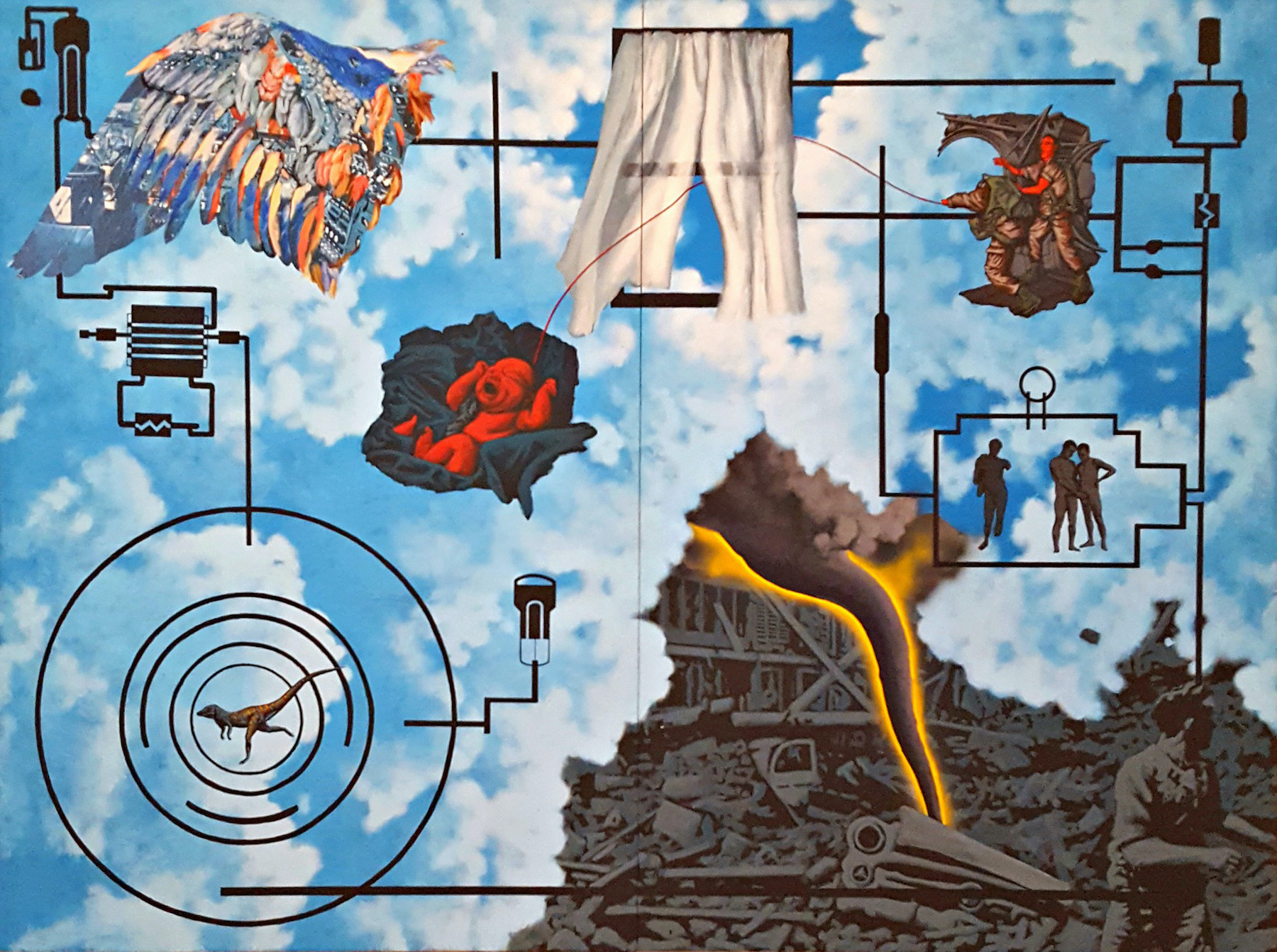Leonardo, After 500 Years
DOI:
https://doi.org/10.58519/aesthinv.v3i1.11960Keywords:
art and science, peasant, art market, Deluge, Leonardo da VinciAbstract
Why has Leonardo been made into a great scientist, to the discounting of his accomplishments in imagining a non-Biblical and totally catastrophic Deluge, his interest in pictograms, his dethronement of the human figure in favor of animals, plants, and flowing water? His project was to be an intellectual artist (which is not quite the same as a conceptual one). He both succeeded and failed. His contemporaries didn't take him seriously enough; our age of science has taken him too seriously; and it remains to us to re-evaluate how and in what ways he broke free of the constraining norms of his day.
Downloads
References
bibitem {Capra} Work has been done fairly recently on the giant and unwieldy crossbow, conceived in a time already being overtaken by cannon; see Matthew Landrus, {em Leonardo's Giant Crossbow}, Berlin, 2010. For an analysis of how Leonardo's place in the history of science, see Fritjof Capra, {em Leonardo, Decoding the Notebooks of a Genius}, San Francisco, 2013. Cf. Martin Johnson, {em Art and Scientific Thought}, New York, 1949, Part Four, 137-90. On the continuing interest of the fossil formations in Italy that attracted Leonardo's attention, see Francis Gooding, ``What Lives and What Dies?,'' {em London Review of Books}, XLI, no. 1, 3 January, 2019, 11-13.
bibitem{Wootton} On the importance of clock mechanisms to early modern thought, see David Wootton, {em Power, Pleasure, and Profit: insatiable Appetites from Machiavelli to Madison}, Cambridge, Ma., 2018, Ch.~6, ``The State: Checks and Balances.''
bibitem{Robertson} Charles Robertson, ``Leonardo da Vinci, London,'' {em Burlington Magazine}, CLIV, 2012, 132-33.
bibitem{Krzyzagorska-Pisarek} Katarzyna Krzy$dot${z}ag'{o}rska-Pisarek, ``La Bella Principessa,'' Arguments against the Attribution to Leonardo,'' {em Artibus et historiae}, XXXVI, 2015, 61-89.
bibitem{Reyburn} Scott Reyburn, ``Value Soars for Leonardo da Vinci Drawing after {em Salvator Mundi},'' {em New York Times}, Nov.~9, 2018; idem, ``An Artistic Discovery Makes a Curator's Head Pound,'' {em New York Times}, Dec.~11, 2016.
bibitem{Christies} url{www.christies.com/features/The-world-is-watching-8723-3.aspx}
bibitem{Beyonce} url{www.youtube.com/watch?v=kbMqWXnpXcA}, currently with 152,000,000 views. The Louvre offers instructions to visitors who want to follow in the trail of the video: url{www.louvre.fr/en/routes/jay-z-and-beyonce-louvre}.
bibitem{Klein} Robert Klein and Henri Zerner, {em Italian Art, 1500-1600, Sources and Documents}, Englewood Cliffs, 1966, 42.
bibitem{Vasari} The artist Vasari admitted to having difficulty placing was Donatello (c.~1386-1466), whose style so approached perfection that he might have been put in the third period.
bibitem{Windsor} url{www.rct.uk/collection/search#/1/collection/912726/a-portrait-of-leonardo}, for the best evidence we have of what an elderly Leonardo looked like.
bibitem{Royal Collection} See the invaluable website for the Royal Collection, Windsor, url{www.rct.uk/collection/search#/16/collection/912698/a-cloudburst-of-material-possessions}.
bibitem{Vecce} Carlo Vecce, {em La biblioteca perduta: i libri di Leonardo}, Rome, 2017; Jean Paul Richter, {em The Notebooks of Leonardo da Vinci}, vol. II, no.~1469, 442-45.
bibitem{Keizer} Joost Keizer, ``Leonardo and Allegory,'' {em Oxford Art Journal}, XXXV, 2012, 433-55.
bibitem{Clayton} The curator at Windsor Castle has recently adjusted the dating on these drawings to the French period rather than the proceeding Roman residency, but we know that Leonardo was ill while in France and these do not appear to be the work of an ailing man. See Martin Clayton, {em Leonardo da Vinci, A Life in Drawing}, New York, 2018, 231-41, where he interprets the set of drawings as a meditation on the artist's own mortality, and also url{https://www.rct.uk/collection/search#/page/1}, and Carmen Bombach, {em Leonardo da Vinci, Master Draftsman}, exh. cat., Metropolitan Museum of Art, New Haven, 2003, 627-31, where she responds to Clayton's dating by suggesting a compromise of 1515-17, while acknowledging that they have alternatively been dated as early as 1512.
bibitem{Peasant} url{www.rct.uk/collection/912573/recto-anbspcostumenbspstudy-ofnbspa-prisoner-verso-a-nude-male-figure}
bibitem{IBM} Beginning in 1951, IBM sponsored touring exhibitions of models of Leonardo's ideas for machines; see Ludwig Heydenreich, ``Leonardo da Vinci, the Scientist,'' Fine Arts Dept., International Machines Corporation, 1951. A still useful summary is provided by Otto Benesch, ``Leonardo and Scientific Drawing,'' {em American Scientist}, XXXI, Oct. 1943, 311-28; for an extreme example, see Edward Buffet, ``Leonardo da Vinci, as Engineer and Machinist, The Universal Genius who in Every Field of Human Knowledge, Art and Invention, Excelled All Other Men that Ever Lived,'' {em American Machinist}, Oct.~28, 1909, 731-7, complete with portrait and a putative quotation from Franc{c}ois Premier.
Downloads
Published
Issue
Section
License

This work is licensed under a Creative Commons Attribution 4.0 International License.
Authors who publish with this journal agree to the following terms:
Authors retain copyright and grant the journal right of first publication with the work simultaneously licensed under a Creative Commons Attribution License that allows others to share the work with an acknowledgement of the work's authorship and initial publication in this journal. Note: up to volume 4 issue 1, an incorrect copyright line appears in the PDFs of the articles.
Authors are able to enter into separate, additional contractual arrangements for the non-exclusive distribution of the journal's published version of the work (e.g., post it to an institutional repository or publish it in a book), with an acknowledgement of its initial publication in this journal.
Authors are permitted and encouraged to post their work online (e.g., in institutional repositories or on their website) prior to and during the submission process, as it can lead to productive exchanges, as well as earlier and greater citation of published work (See The Effect of Open Access).






